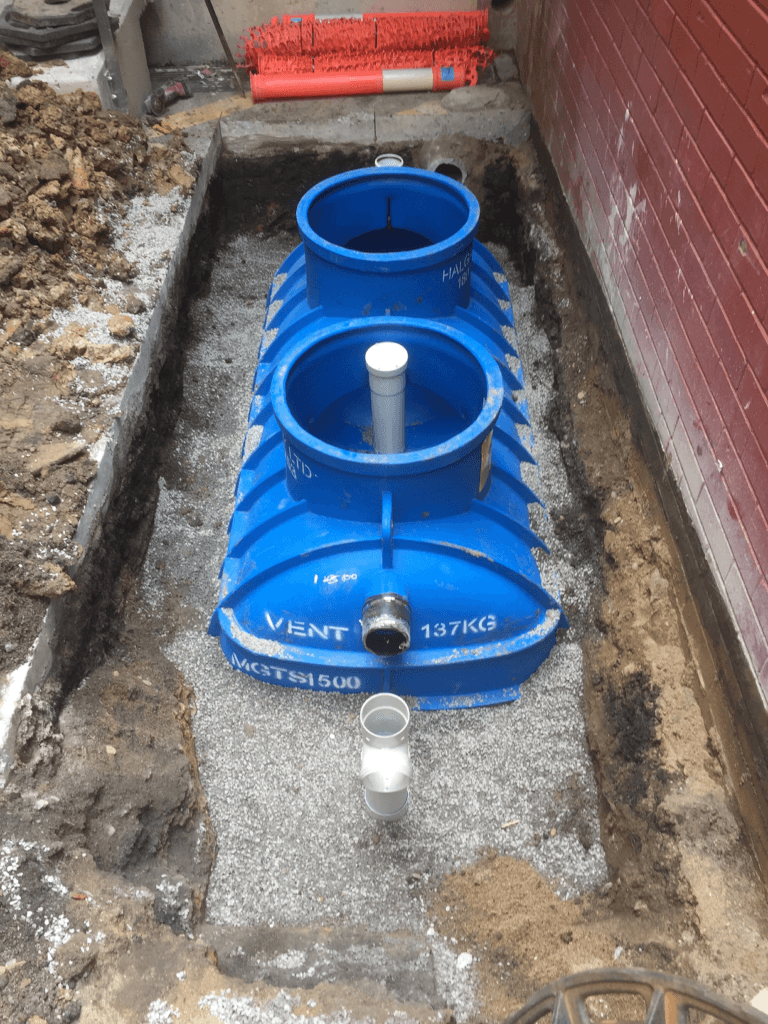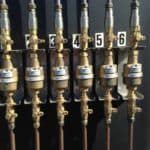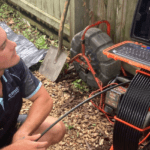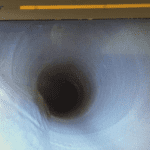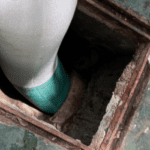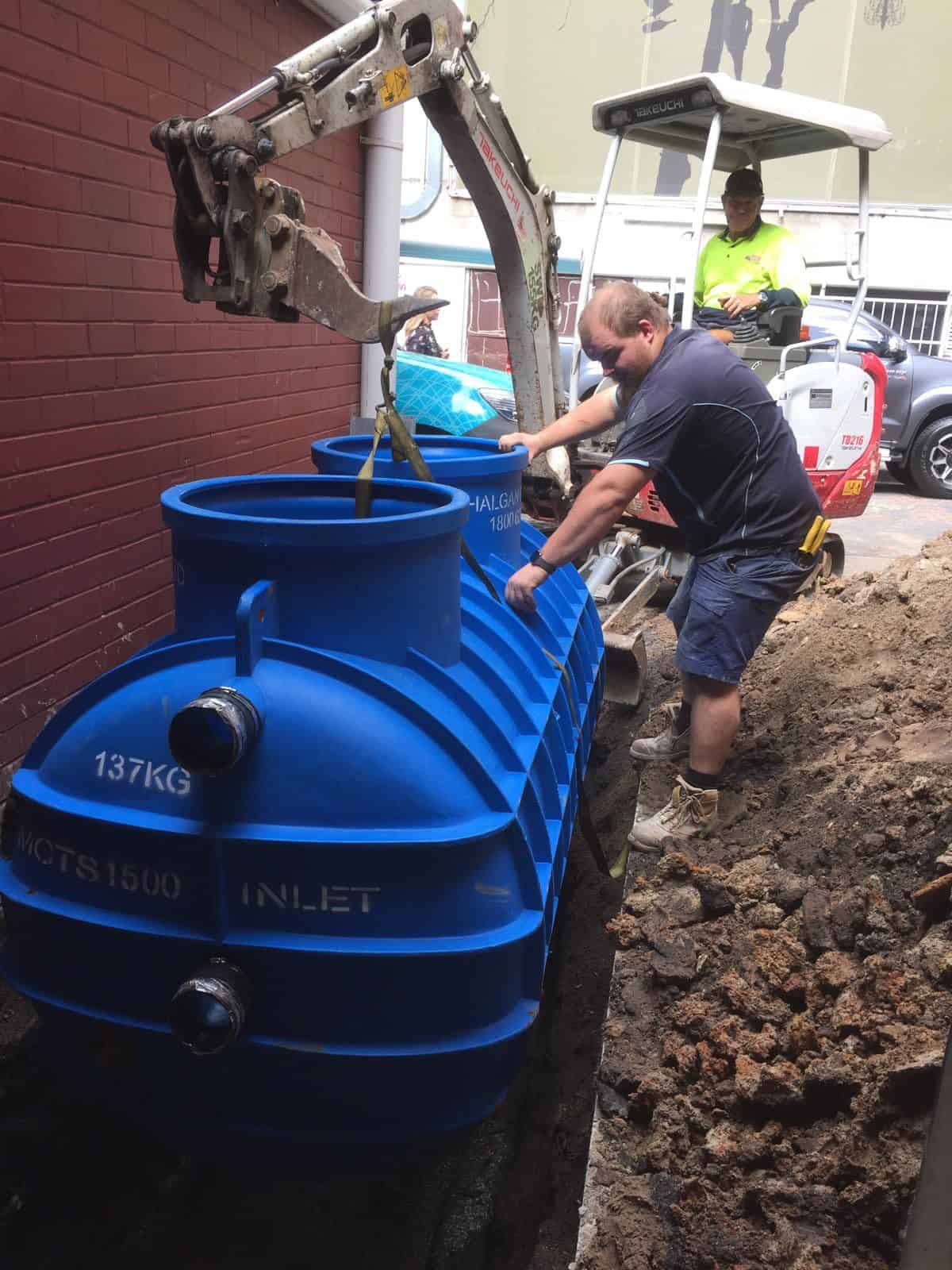
When you’re running a commercial kitchen a lot of waste can buildup in your pipes – mostly in the form of fats, oil and grease. As a commercial business, it’s your responsibility by law, to ensure the correct disposal of this waste. Flushing fats, oil and grease, or FOG, down a standard drain can build up and clog the pipes – which will not only cost you in the future in fixing damaged pipes, but it can be detrimental to the environment and wider sewer systems.
Like anything, installing and maintaining a large appliance can be tricky – not to mention finding the right type for your business!
Read ahead to learn what grease traps are, what you’ll need for your business and how to maintain you grease trap.
What is a Grease Trap?
Simply put, a grease trap is a system within a drain or waste pipe to prevent grease from entering the wider sewer system.
While it doesn’t mean you can just put everything down the kitchen sink and your system will take care of it, it does mean that the excess oil and waste compared to a domestic kitchen won’t build up and damage the plumbing systems.
Not only does the grease trap prevent a buildup of gunk in your pipes, but they can prevent contaminants from reaching the water supply – and your kitchen will be more sanitary!
There are a lot of different sized systems on the market based on your needs. A simple grease trap can handle a lower flow rate. But if you’re working on a larger scale, you may need a Grease Interceptor Trap. The sizing will depend on the plumbed-in fixtures you require in your kitchen.
The QLD Trade Waste Guidelines have been put in place to help you determine what you need for your business. But they can still be a bit confusing if you’re still getting your business off the ground. An experienced and qualified commercial plumber understands these guidelines and can help you make the right choice.
How Does a Grease Trap Work?
Basically, a grease trap is a plumbing device that separates the grease, oil and excess food stuffs from the water that can safely enter the sewer system. There are many different types of grease traps and interceptors and may work in slightly different ways, but the end result is always the same.
When the outflow from your kitchen sink enters the grease trap, the solid food particles sink to the bottom, while they lighter grease and oils float to the top. This cleaner water in the middle is then pumped into a secondary tank and returned to the regular sewer system and continues its journey as normal.
This leaves the leftover grease and solids in the first tank. After a period of time these solids will build up.This waste must be then pumped out and disposed of, you’ll need to hire a trusted contractor to dispose of this waste correctly.
Your grease trap must be installed as close to the kitchen as possible, while also being easily accessible for cleaning and maintenance. If you’re working with an experienced commercial plumber, you won’t be expected to know the best place to install your trap – we know where it should go and how it all works!
You Must Regularly Clean Your Grease Trap
Because your grease trap will be constantly filled with cooling oils and fats that become solids there is a massive potential for this to get caught up and trapped within the device. It’s easy to understand how your grease trap can get clogged up in no time!
If your grease trap gets clogged, it means that the build up of waste material can cause your sink to overflow and create even more problems with your plumbing.
If you refer to the QLD guidance for trade waste, you’ll find that you’re required to regularly clean your grease trap monthly or quarterly based on the size of your device. However, you may need cleaning ahead of schedule if you’re busier than other establishments and there are signs that this necessary for you including…
- Slow sink drainage caused from a buildup of gunk means that your water has a more narrow area for drainage and can quickly lead to bigger problems
- Foul odors from the buildup of fat and oils
- Noisy drains in the form of gurgling or growling means that your sink waste/s may have clogged
Your commercial plumber can help you set up a maintenance schedule for your grease traps based on usage and grease trap type.
The Best Way to Maintain Your Grease Trap
The best thing that you can do if you suspect that your grease trap needs maintenance is to call a commercial plumber.
But we know how tempting it can be to DIY – we know we love to get our hands dirty!
So here are a few things that you can do…
- Regularly flush your kitchen drains with hot water to help congealed solids move down the pipes into the grease trap.
- Use environmentally friendly cleaning products so the run off doesn’t enter our sewer system. .
- Everyone in your kitchen team should know how important it is to maintain your kitchen drains which run into your grease trap. Help them to learn the signs that a grease trap needs to be cleaned so that when there is a sign of trouble, your commercial plumber can get onto is ASAP.

